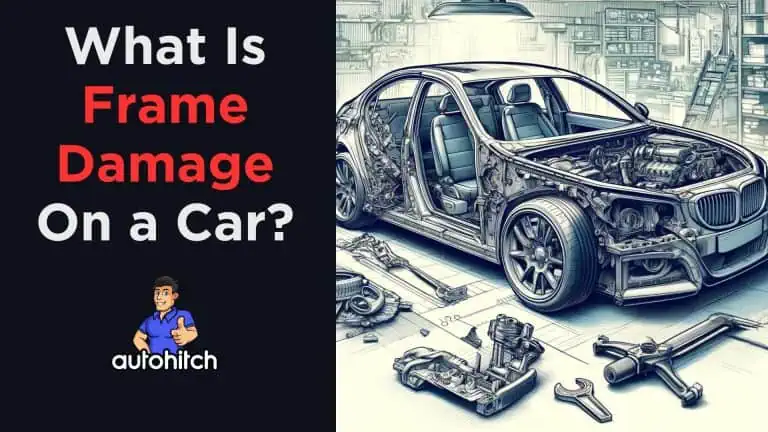Frame damage on a car refers to any harm to the structural components of a vehicle that are intended to support its shape and integrity.
It can be caused by collisions or disrepair, and the extent of the damage can vary greatly.
A damaged frame can pose significant safety risks and make a vehicle unsafe to drive, particularly if it impacts the structural integrity of the car.
Related Articles to Read:
- What is a Total Loss Vehicle
- What To Do After a Total Loss Accident
- How to Sell a Total Loss Car
- What is a Salvage Title
Table of Contents
What Is a Car Frame and Why Is It Important?
Purpose of a Car Frame
The frame, also known as the chassis, is your car’s structural support system. Its purpose is to:
- Support the weight of the vehicle and all its components
- Maintain the shape of the vehicle
- Protect passengers by absorbing impact in a collision
- Provide a mounting point for the suspension, engine, and body panels
The frame is essentially the backbone of your car.
What is a Car Frame Made Of?
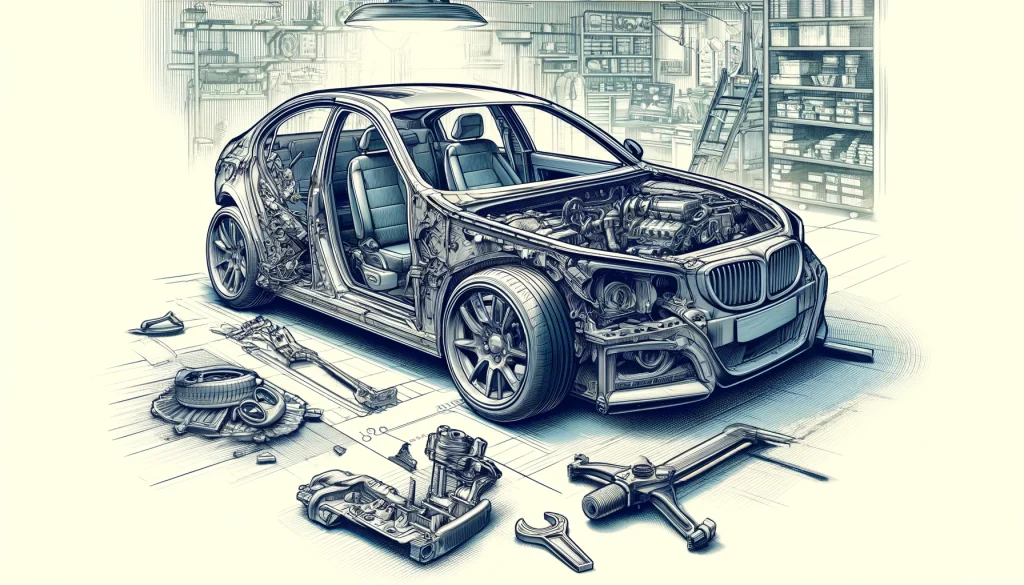
It’s typically made of strong, rigid materials like steel or high-strength aluminum. Most modern passenger cars use a unibody design, where the frame and body are a single integrated structure.
Trucks and some SUVs still use a separate body-on-frame design.
The Significance of Frame Damage on Safety
Damage to a frame can make a vehicle unsafe to drive by compromising its integrity, alignment, and ability to protect occupants in a crash. Even if damage seems minor, it’s important to have the frame inspected after any accident.
Common Causes of Frame Damage
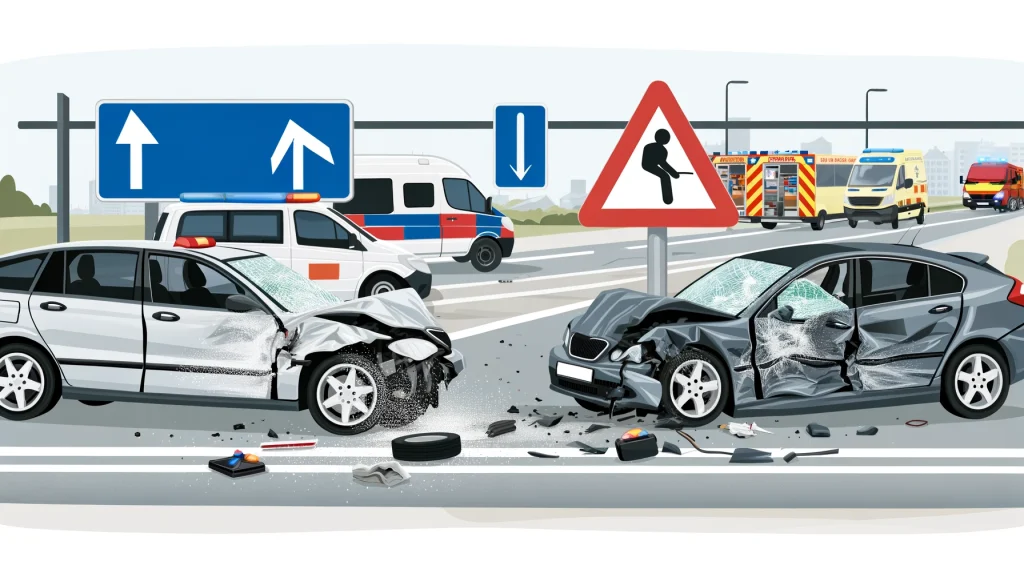
The most common cause of frame damage is a collision, either with another vehicle or object. The force of impact can bend, twist, or crumple the frame. Other potential causes include:
- Hitting potholes, curbs, or debris on the road
- Driving over rough terrain or through deep water
- Carrying excessive weight that stresses the frame
- Corrosion and rust weakening an older frame
- Improper repairs or modifications to the frame
Signs You May Have Frame Damage
Visible signs:
- Cracks, creases, or bends in the frame rails
- Uneven gaps between body panels
- Misaligned doors, hood, or trunk that don’t close properly
- Visible damage under the car
Driving symptoms:
- Car pulls to one side or steering wheel is off-center
- Uneven tire wear
- Unusual squeaks, creaks, or rattles
- Leaning, sagging, or swaying to one side
- Wheels seem to track unevenly
After any accident, even a minor one, it’s best to have your car inspected by a professional who can identify frame damage you may not be able to see. Many collision repair shops offer free inspections.
Types of Frame Damage
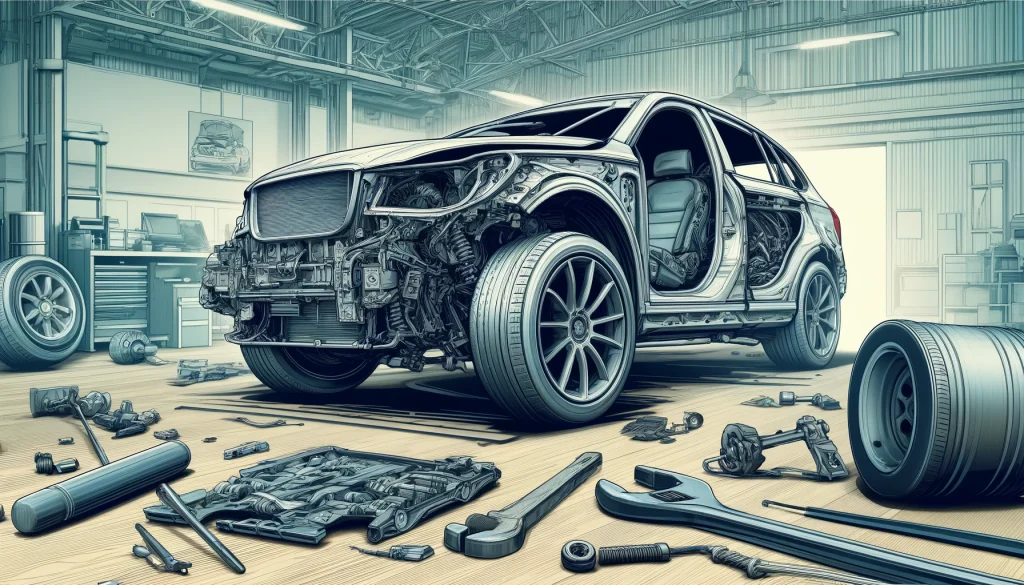
There are several common types of frame damage:
| Type | Description |
|---|---|
| Sway damage | Frame bends to the side from impact to a corner of the vehicle |
| Mash damage | Frame crumples and shortens from a front or rear impact |
| Twisted damage | Frame twists or contorts from impact or structural weakness |
| Sagging damage | Frame sags or droops in the middle from carrying heavy loads |
The severity of frame damage can range from minor misalignments to major structural issues that make the vehicle unsafe and unrepairable. An experienced mechanic can assess the extent of the damage.
What to Do If You Suspect Frame Damage
If you’ve been in an accident or suspect frame damage for any reason, take the following steps:
- Get your car to a safe location if possible. If the damage is severe, have it towed.
- Contact your insurance company to report the accident and start a claim.
- Have the vehicle inspected by a reputable collision repair shop that has the equipment and expertise to diagnose frame damage. Many offer free inspections.
- Get a repair estimate in writing and review it carefully with your insurance company to determine next steps.
Depending on the extent of the damage, the vehicle may be repairable or declared a total loss. Frame damage doesn’t always mean a car is totaled, but it’s important to have it properly assessed.
Frame Repair Options
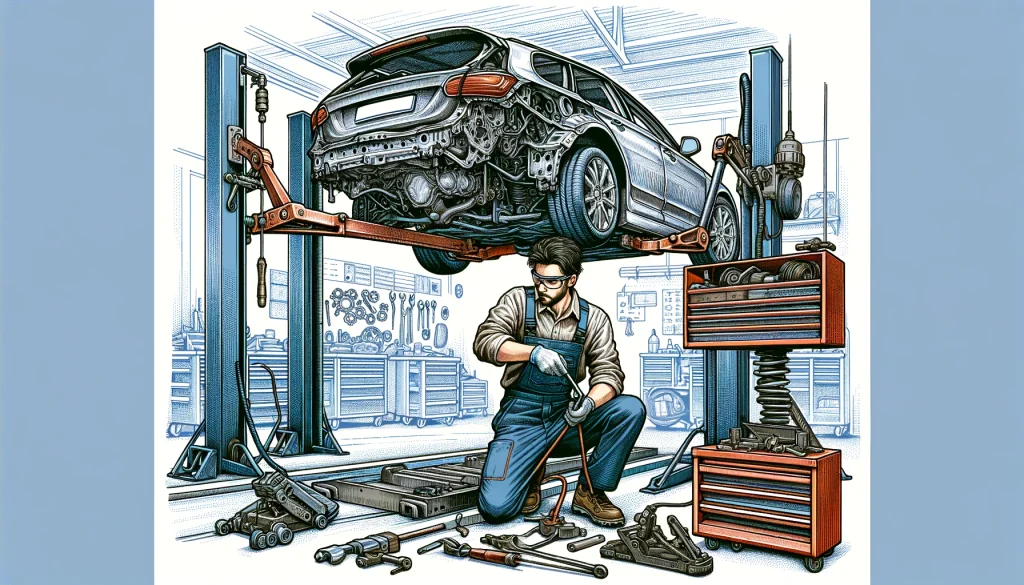
Minor frame damage can often be repaired by an auto body shop with the proper equipment and skill. They usually repair car frames by:
- Straightening bent areas using a hydraulic machine or frame rack
- Welding or patching cracks in the frame
- Replacing severely damaged frame rails or unibody sections
However, extensive frame damage is not always repairable.
In some cases, the structural integrity may be too compromised for the vehicle to be safely driven again. Attempting to repair a badly damaged frame can result in alignment and handling issues down the road.
If you do get a car frame repair, always use a reputable shop that has specific experience with this type of work and uses the proper equipment.
Ask about their frame repair process, warranties, and any potential impacts to the vehicle’s safety and resale value.
Buying a Car with Frame Damage
Based on the information provided in the search results, here are a few things you need to consider when buying a car with frame damage, specifically regarding resale value and insurance:
Resale Value
Frame damage can significantly decrease a car’s resale value, typically by 30% or more depending on the extent of the damage. Even if the frame damage has been properly repaired, the car will still likely sell for considerably less than a similar vehicle with a clean title.
Some key factors that impact resale value of a car with frame damage:
- Extent and location of the damage (minor vs major structural damage)
- Quality of the repair work done
- Whether the car has a salvage/rebuilt title due to the damage
When trading in or selling a car that had frame damage, you can expect to get offers well below normal book value, even if it was repaired properly.
Most dealerships will avoid taking frame damaged cars on trade-in or offer very low amounts.
Insurance
Getting insurance coverage on a car with prior frame damage, especially one with a salvage or rebuilt title, can be challenging:
- Many insurers will refuse to provide full coverage on rebuilt title vehicles, only offering liability
- Those that do insure rebuilt cars may charge the same premiums as for a clean title vehicle, despite its much lower value
- Insurers view frame damaged/rebuilt cars as higher risk due to difficulty assessing their true condition and value
If you make a claim on a car with prior frame damage, the insurer will likely pay out much less due to its diminished value. In some cases, relatively minor damage could cause the insurer to total out the car due its already reduced value from the prior damage.
Identify Frame Damage When Buying a Car
Frame damage will typically show up on a vehicle history report like Carfax.
These reports pull data from insurance companies, police reports, and repair shops to document any accidents or damage a vehicle has sustained. If a car was in an accident severe enough to cause frame damage, it will likely be recorded on the vehicle history report as “structural damage” or “frame damage”.
Related Article: How To Read A Carfax
Conclusion
Frame damage is a serious issue that can render a vehicle unsafe to drive and significantly diminish its value. Recognizing the signs and promptly addressing any suspected damage (The right way) is going to be important for the safety and longevity of the vehicle and any passengers.

